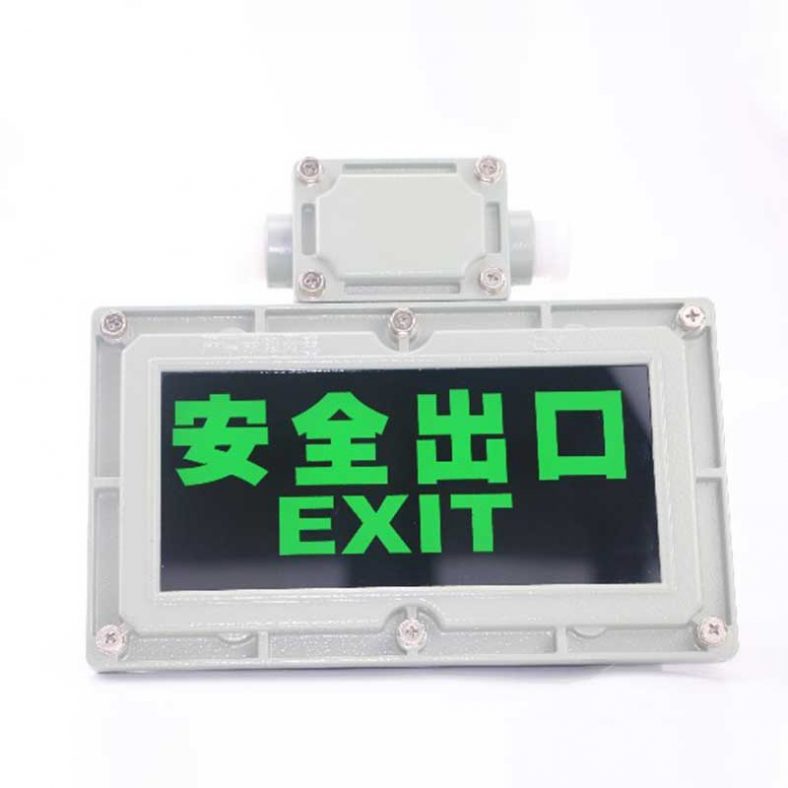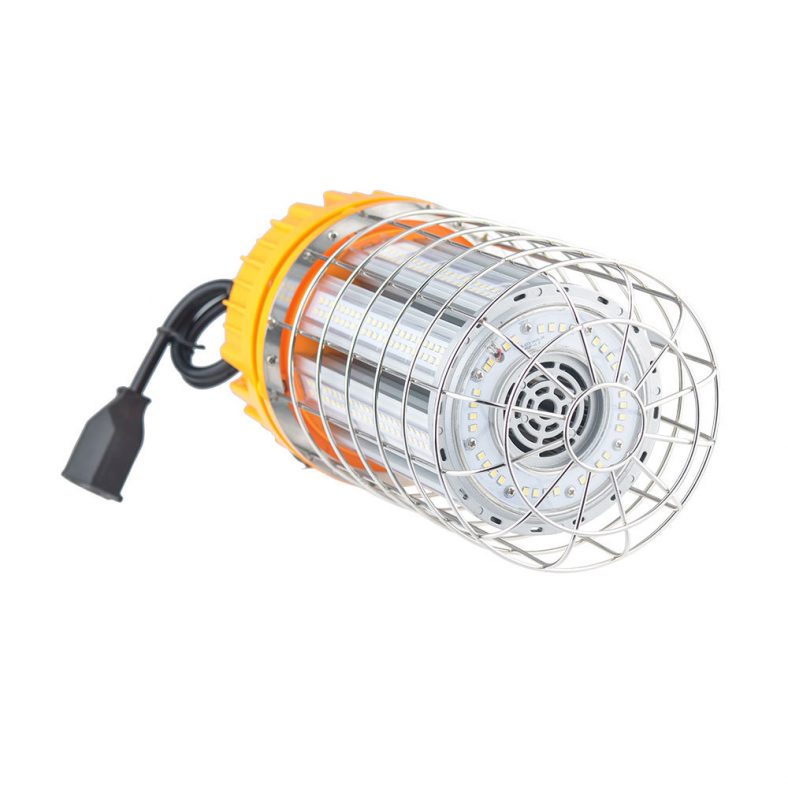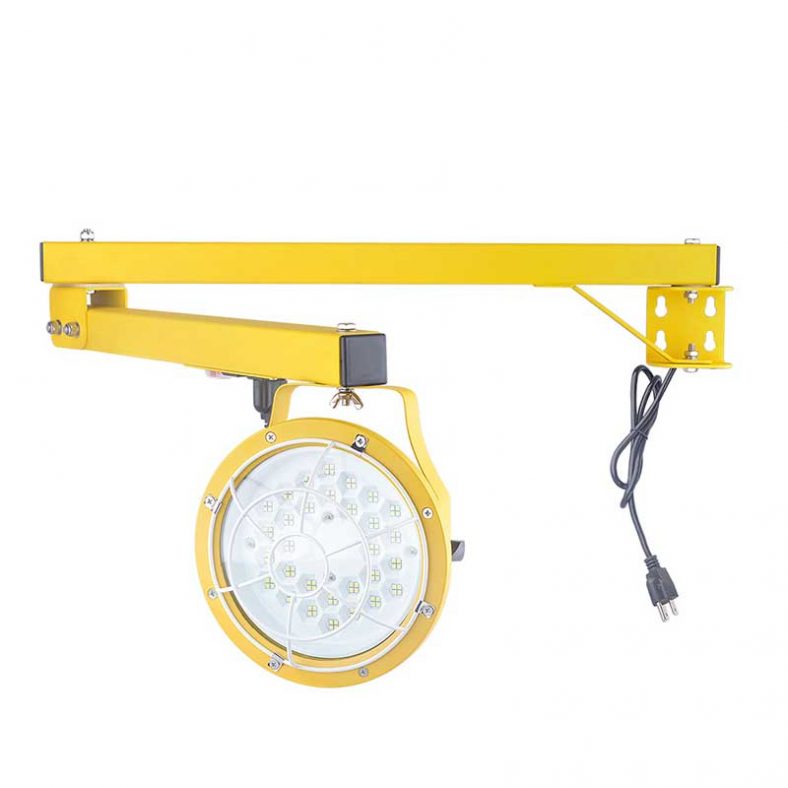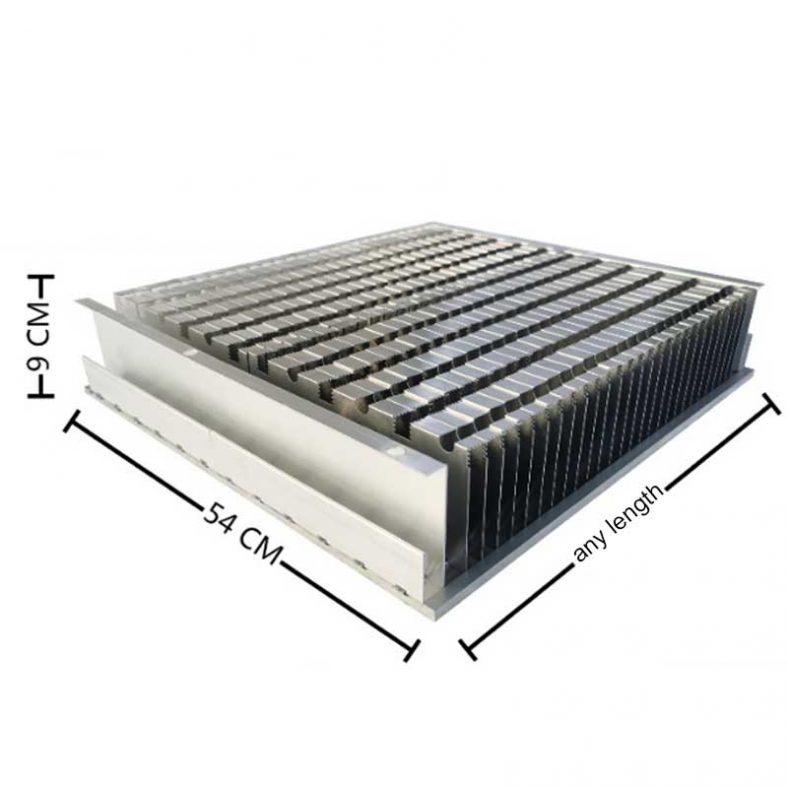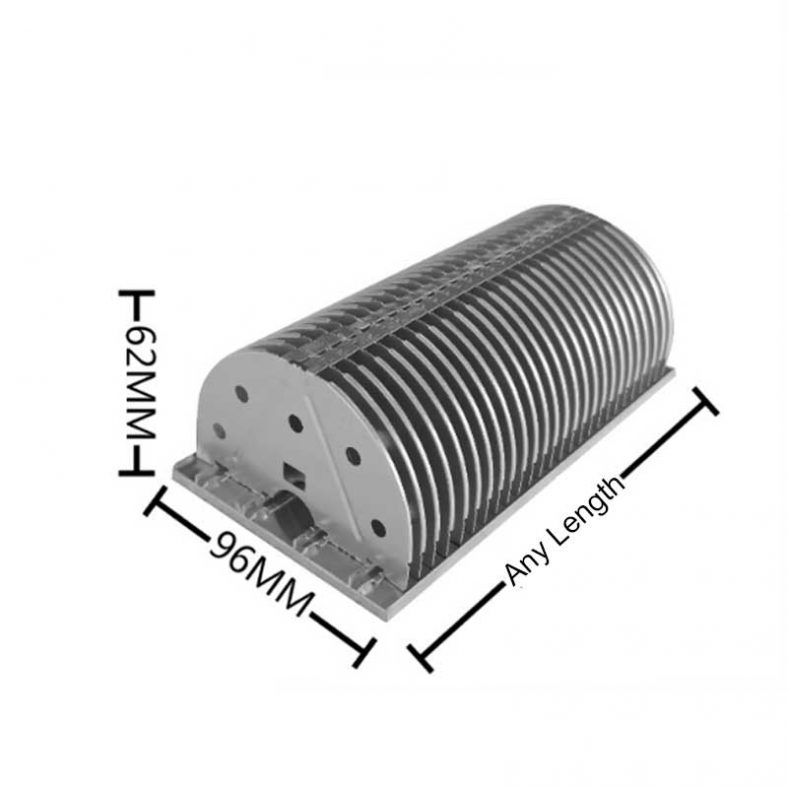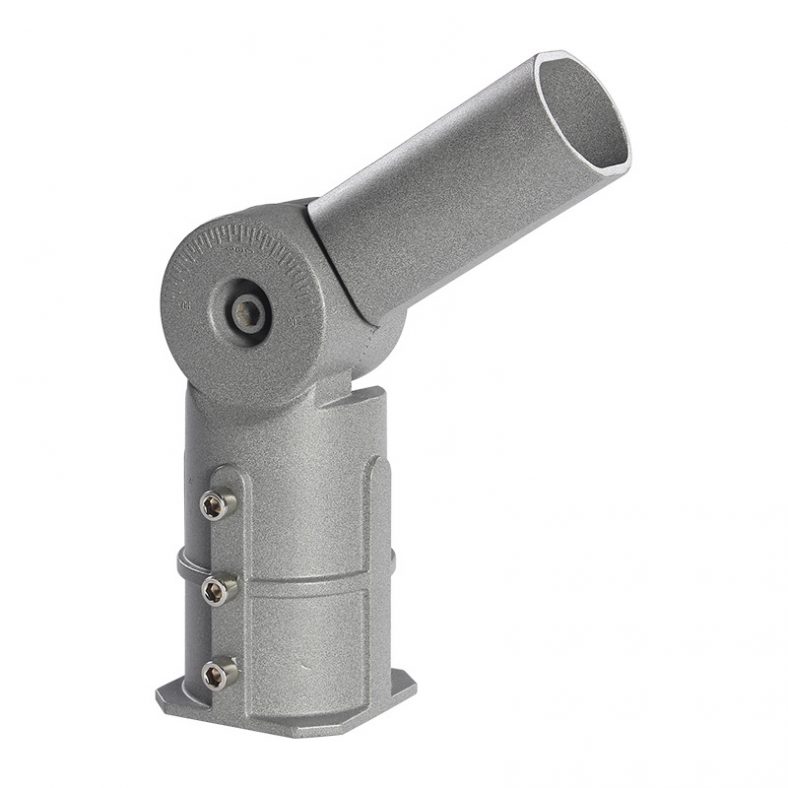
Explosion Proof Lights Manufacturer
Explosion Proof Light to meet your every need.
Wandan Lighting offers a wide range of high-powered Explosion Proof LED Lights. These fixtures are designed to provide even lighting over your outdoor area or sports court. We have fixtures in an array of wattages, lumen outputs, CRIs, beam angles, and optional accessories. All of our fixtures include 1-10v dimming standard. We know that every explosion proof LED lights project is unique; our team is prepared to provide the close attention to detail necessary to get the job done right.Got a project? Need to order light fixtures in bulk or resell as a distributor? Wandan Lighting is here for all your commercial and Explosion Proof LED Lights purchases needs. Contact us today at [email protected].
Explosion Proof LED Light
Wandan Lighting specialist offers a wide variety of Explosion Proof LED Lights to meet your every need.
An explosion-proof LED light is a type of LED light fixture that is designed to operate safely in environments that may contain flammable gases, vapors, or dusts. These lights are constructed with specialized materials and components that prevent them from igniting or sparking in the presence of explosive or flammable substances.
Explosion-proof LED lights offer several advantages over traditional explosion-proof lighting technologies such as incandescent or fluorescent bulbs. LED lights are more energy-efficient, have longer lifetimes, and generate less heat than traditional lighting technologies, making them an excellent choice for hazardous environments.
Explosion-proof LED lights typically use high-quality LED chips and drivers that are designed to withstand harsh environments and resist corrosion. The housings of these lights are typically made of materials such as aluminum, stainless steel, or copper-free aluminum, which can withstand the rigors of harsh environments and resist corrosion.
In addition to being explosion-proof, many explosion-proof LED lights also meet other industry standards such as NEMA (National Electrical Manufacturers Association) ratings for protection against dust, water, and other environmental factors.
If you need to install explosion-proof LED lights in a hazardous environment, it’s important to consult with a qualified electrician or other safety professional to ensure proper installation and operation. It’s also important to follow all safety guidelines and regulations when working with explosive or flammable materials.
Relate Explosion Proof Lights
Wandan Lighting specialist offers a wide variety of Explosion Proof Lights to meet your every need.
Explosion Proof Light Kits/Parts
Wandan Lighting specialist offers a wide variety of Explosion Proof Lights to meet your every need.
Explosion Proof Lights Buy guide
Wandan Lighting specialist offers a wide variety of Explosion Proof Lights to meet your every need.
Explosion-proof lights are lighting fixtures that are designed to operate in environments that may contain flammable gases, vapors, or dusts. These lights are constructed with special materials and components that prevent them from igniting or sparking in the presence of explosive or flammable substances.
Explosion-proof lights are commonly used in a variety of hazardous environments, including chemical plants, refineries, oil rigs, and other industrial settings where flammable substances may be present. These lights are typically constructed with heavy-duty housings made of materials such as aluminum, stainless steel, or copper-free aluminum, which can withstand the rigors of harsh environments and resist corrosion.
Explosion-proof lights are also equipped with special seals, gaskets, and other features that prevent the entry of flammable substances into the fixture, as well as prevent the escape of sparks or heat that could ignite explosive materials. Additionally, explosion-proof lights may have other features such as thermal protection and automatic shut-off systems to further enhance safety.
It’s important to note that working with explosive or flammable materials can be dangerous, and it’s essential to follow all safety guidelines and regulations when installing or using explosion-proof lights. If you need to install explosion-proof lighting in a hazardous environment, it’s important to consult with a qualified electrician or other safety professional to ensure proper installation and operation.
Making an explosion-proof light requires specialized knowledge and materials, as well as compliance with specific standards and regulations. Therefore, it’s recommended that you consult with an experienced electrician or lighting manufacturer who can ensure that the light meets all necessary requirements for use in hazardous environments.
However, here are some general steps that are typically involved in making an explosion-proof light:
- Select the appropriate materials: Explosion-proof lights are typically made from materials such as cast aluminum, stainless steel, or fiberglass reinforced polyester, which are resistant to corrosion and damage. Other materials used in explosion-proof lights include borosilicate glass, quartz, and ceramic.
- Design the enclosure: The enclosure is a critical component of the explosion-proof light, as it is designed to contain any sparks or flames that might be generated by the light. The enclosure must be designed to prevent the ingress of flammable gases, vapors, or dust particles. It must also be properly sealed to prevent the escape of any potentially flammable substances.
- Choose the appropriate wiring: Explosion-proof lights use specialized wiring and connections that prevent sparks from being generated when the light is turned on or off. The wiring is typically grounded to prevent any static electricity buildup that could ignite flammable substances.
- Install an appropriate bulb: Explosion-proof lights use specialized bulbs that are resistant to breakage and can withstand high temperatures without igniting flammable substances. These bulbs are typically made from materials such as borosilicate glass, quartz, or ceramic.
- Test the light: Once the light is assembled, it must be tested to ensure that it meets all necessary standards and regulations for use in hazardous environments. This may involve subjecting the light to simulated explosive conditions to ensure that it can withstand any potential hazards.
Overall, making an explosion-proof light requires specialized knowledge and expertise to ensure that it meets all necessary safety standards and regulations. It’s recommended that you consult with an experienced electrician or lighting manufacturer to ensure that your explosion-proof light is properly designed and constructed for use in hazardous environments.
Opening an explosion-proof light fixture requires caution and following specific procedures to prevent the risk of explosion or electrical shock. Here are some general steps that you can follow to safely open an explosion-proof light fixture:
- Turn off the power: Before opening the fixture, ensure that the power to the light fixture is turned off. This can be done by turning off the circuit breaker or disconnecting the power source.
- Allow the fixture to cool: If the light fixture has been in use, wait for it to cool down before attempting to open it. This will prevent any potential burn hazards.
- Remove the screws: Most explosion-proof light fixtures are secured with screws. Use a screwdriver to remove the screws that hold the fixture together. Depending on the design of the fixture, there may be a locking mechanism that needs to be disengaged before the fixture can be opened.
- Check for any damage: Before handling the components inside the fixture, check for any visible damage to the fixture or its components. If there is any damage, do not proceed with opening the fixture and seek the assistance of a qualified electrician.
- Remove the bulb: Carefully remove the bulb from the fixture, taking care not to break it. If the bulb is broken, it should be handled with caution and disposed of properly.
- Inspect the components: Once the bulb is removed, inspect the other components inside the fixture for any damage or wear. If any components are damaged or worn, they should be replaced before the fixture is reassembled.
- Reassemble the fixture: Once any necessary repairs have been made, reassemble the fixture by reversing the steps used to disassemble it. Ensure that all screws are tightened securely.
- Turn the power back on: After the fixture has been reassembled, turn the power back on to the fixture and test it to ensure that it is working properly.
Overall, opening an explosion-proof light fixture requires caution and following specific procedures to ensure safety. If you are unsure about how to open an explosion-proof light fixture or if you encounter any issues during the process, it’s recommended that you seek the assistance of a qualified electrician.
Testing an explosion-proof LED exit light involves ensuring that the light functions correctly and that the battery backup system is operating correctly. Here are some general steps that you can follow to test an explosion-proof LED exit light:
- Visual inspection: Begin by visually inspecting the LED exit light to ensure that there is no visible damage or wear.
- Power up the light: Turn on the power to the LED exit light and ensure that the light illuminates properly. The LED light should be bright and clearly visible from all angles.
- Test the battery backup: Unplug the LED exit light from the power source to test the battery backup. The LED light should continue to function for a minimum of 90 minutes after being unplugged. If the battery backup fails, it should be replaced.
- Perform a monthly test: In addition to the initial test, it’s recommended to perform a monthly test of the LED exit light. This test involves unplugging the light from the power source for a minimum of 30 seconds to ensure that the battery backup system is functioning correctly.
- Record the results: After testing the LED exit light, record the results in a log book to ensure that the light has been tested and is functioning correctly. This log book should include the date of the test, the name of the person who performed the test, and the results of the test.
Overall, testing an explosion-proof LED exit light involves ensuring that the light functions correctly and that the battery backup system is operating correctly. If you encounter any issues during the testing process, it’s recommended that you seek the assistance of a qualified electrician.
LED lights can be designed to be explosion-proof, but not all LED lights are explosion-proof.
Explosion-proof LED lights are specifically designed to prevent the ignition of flammable gases, vapors, or dust particles. They are commonly used in hazardous locations such as oil rigs, chemical plants, and mining facilities where the presence of flammable substances poses a risk of explosion.
To be classified as explosion-proof, LED lights must meet certain standards and regulations, such as those set by the National Electric Code (NEC) in the United States or the International Electrotechnical Commission (IEC) in Europe. These standards define the level of protection required to prevent an explosion in hazardous locations.
Therefore, if you require LED lights for use in potentially explosive environments, it’s essential to select explosion-proof LED lights that meet the required standards and regulations to ensure safety.
Explosion-proof lighting works by using special designs and materials to prevent the ignition of flammable substances in hazardous environments.
Here are some of the key features that make explosion-proof lighting different from standard lighting:
- Enclosures: Explosion-proof lighting is enclosed in a specialized housing that is designed to contain any sparks or flames that might be generated by the light. These enclosures are typically made from materials such as cast aluminum, stainless steel, or fiberglass reinforced polyester, which are resistant to corrosion and damage.
- Sealing: Explosion-proof lighting is designed to prevent flammable gases, vapors, or dust particles from entering the enclosure and coming into contact with any potential ignition sources. This is achieved through specialized seals, gaskets, and O-rings that prevent the ingress of flammable substances.
- Wiring: Explosion-proof lighting features special wiring and connections that prevent sparks from being generated when the light is turned on or off. The wiring is typically grounded to prevent any static electricity buildup that could ignite flammable substances.
- Bulbs: Explosion-proof lighting uses specially designed bulbs that are resistant to breakage and can withstand high temperatures without igniting flammable substances. These bulbs are typically made from materials such as borosilicate glass, quartz, or ceramic.
Overall, explosion-proof lighting is designed to ensure that no sparks, flames, or other ignition sources can be generated by the light, even in potentially explosive environments. This helps to protect workers and facilities from the risks of fire and explosion in hazardous locations.
Removing an explosion-proof light fixture requires caution and following specific procedures to prevent the risk of explosion or electrical shock. Here are some general steps that you can follow to safely remove an explosion-proof light fixture:
- Turn off the power: Before removing the fixture, ensure that the power to the light fixture is turned off. This can be done by turning off the circuit breaker or disconnecting the power source.
- Allow the fixture to cool: If the light fixture has been in use, wait for it to cool down before attempting to remove it. This will prevent any potential burn hazards.
- Remove the screws: Most explosion-proof light fixtures are secured with screws. Use a screwdriver to remove the screws that hold the fixture to the mounting bracket or fixture box. Depending on the design of the fixture, there may be a locking mechanism that needs to be disengaged before the fixture can be removed.
- Disconnect the wiring: Once the fixture is detached from the mounting bracket or fixture box, disconnect the wiring from the fixture. This may involve removing wire nuts or loosening screws that secure the wiring.
- Check for any damage: Before handling the components of the fixture, check for any visible damage to the fixture or its components. If there is any damage, do not proceed with removing the fixture and seek the assistance of a qualified electrician.
- Remove the fixture: Carefully remove the fixture from the mounting bracket or fixture box, taking care not to damage the wiring or other components.
- Secure the wiring: After the fixture has been removed, securely cover the wiring with a wire nut or electrical tape to prevent any accidental contact with live wires.
Overall, removing an explosion-proof light fixture requires caution and following specific procedures to ensure safety. If you are unsure about how to remove an explosion-proof light fixture or if you encounter any issues during the process, it’s recommended that you seek the assistance of a qualified electrician.
Explosion-proof lights are designed to prevent the ignition of flammable gases, vapors, and dust in hazardous environments where explosive substances may be present. These lights are typically made from materials that can withstand high levels of heat and pressure, and they are constructed to contain any sparks or flames that might be produced in the event of an explosion.
The materials used to cast explosion-proof lights can vary depending on the specific requirements of the application. Common materials include aluminum, stainless steel, and cast iron. These materials are chosen for their ability to withstand harsh environmental conditions, such as exposure to corrosive chemicals or extreme temperatures.
In addition to the materials used to cast the lights, explosion-proof lighting fixtures are also designed with special features to prevent explosions. For example, they may have sealed housings to prevent the entry of flammable gases or dust, or they may use specialized wiring and electrical components that are designed to prevent sparking or arcing. Overall, explosion-proof lights are an important safety feature in hazardous environments and are designed to prevent potential disasters from occurring.


